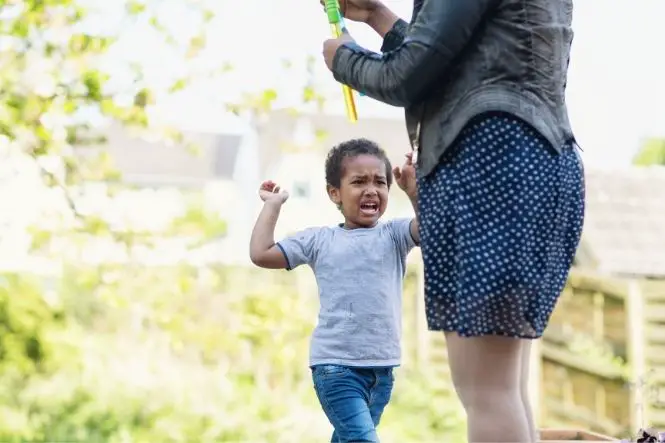Children throw temper tantrums as a way to express the pent-up anger frustration and sometimes even fear that they are not always able to verbalise. Not all children throw temper tantrums, and not all children throw temper tantrums in the same way, but for the most part fits of crying, screaming and even hitting, kicking or throwing things are not all that uncommon for young children. Public temper tantrums can be embarrassing for parents of young children, and they can be embarrassing for school-age and older children who become overwhelmed and lose control in front of adults and peers.
Public Temper Tantrums
Public temper tantrums are those that occur outside of the family home and in the presence of others (whether known to the child or total strangers). Temper tantrums often occur because children are not getting the attention that they crave, because they feel out of control, because they want something that it unavailable to them and/or because they become excessively tired or hungry, and these needs cloud their judgement. Parents can help head off public temper tantrums by making sure that their child has some of their attention, have control of some smaller options, are distracted from items unavailable to them, and aren’t kept out in public without proper rest and snacks.
Coping with Public Temper Tantrums
Unfortunately, experts advise that the best way to cope with a child’s public temper tantrum is to wait it out. Parents must remember that when children engage in temper tantrums they are essentially overwhelmed and out of control so parents must remain calm and in control. If possible, children should be moved to an area of some privacy (even if it means returning to the car outside of a busy shopping centre, or the toilet of a public restaurant) and allowed to work through their emotions no matter how unpleasant it might be for on-lookers. However, parents should also seek to understand the cause of the tantrum in case it is due to pain or something similar and the child’s safety is in danger.
The Aftermath of Public Temper Tantrums
When a child has engaged in a public temper tantrum (s)he will often have trouble calming back down and returning to social activities. Parents can help a child by telling him/her that she will calm down now – children often respond well to this firm instruction. When children are calm, parents should speak with them about what started the tantrum, how it made the child feel, and what the child could do the next time they encounter a similar situation. When this conversation has taken place, parents can then return the child to the setting in which the temper tantrum took place and re-introduce him/her to a suitable activity.
Children throw temper tantrums because they are unable to calmly and rationally discuss their emotions. Some temper tantrums may be thrown in an attempt to attain something – whether it be attention, enthusiasm or a physical item – but to give these things to the child would be simply rewarding their behaviour. Instead, parents should attempt to wait out a tantrum (in a more private setting, if possible) and discuss it calmly with the child afterwards. If temper tantrums become excessive or present a danger to the child or another individual, parents should seek advice from their GP.


